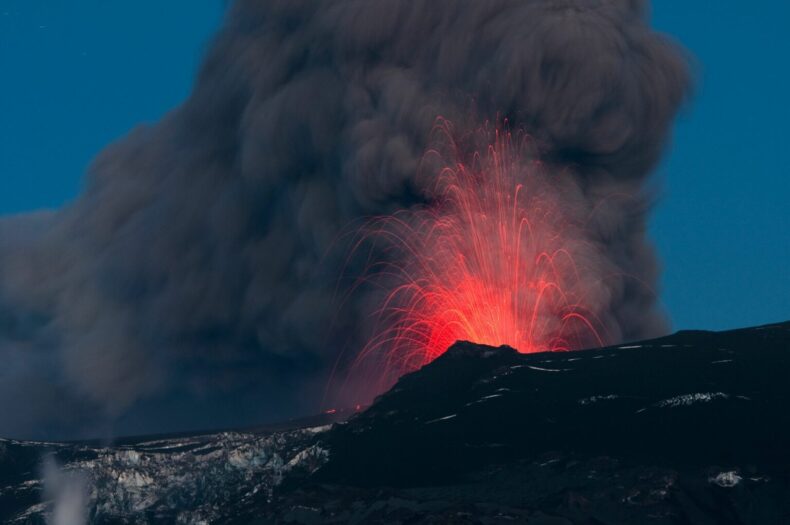Iceland is renowned for its magnificent glaciers, erupting volcanoes, and scorching hot springs in frigid weather. The name “the land of ice and fire” is appropriate given its contrasted surroundings. Unsettling events this week have alerted Southwest Iceland, particularly the areas near its capital Reykjavik, raising worries across the globe.
Approximately 4,700 earthquakes have been registered beneath Mount Fagradalsfjall on the Reykjanes Peninsula since Tuesday afternoon (July 4), according to the Icelandic Meteorological Office (IMO).
Additionally, since Thursday night (July 6) over six earthquakes with a magnitude greater than 3.5 have been registered in the Reykjanes Peninsula, with the most powerful quakes in southwest Iceland producing isolated rock falls. Overall, it is anticipated that the current earthquake swarm will continue, albeit with slightly less severity, in terms of both the quantity and size of tremors.

Southwest of Iceland’s capital, Reykjavik, the Fagradalsfjall volcano is erupting with lava flows and smoke.
Aviation industry at risk due to volcanic eruptions
Although seismic activity has somewhat diminished in the area around the dike, a continuation of this activity is likely. At this particular time, it is crucial to emphasize this. Although the Iceland Met Office has issued warnings about a probable volcanic eruption, it is still possible that the eruption won’t occur as a result of the declining seismic activity.
Aviation alerts were upgraded from “green” to “orange” in response to increased seismic activity, indicating that a big volcanic eruption is suspected but does not present a significant threat to air traffic. The aviation sector assesses the dangers of volcanic eruptions using a color-coded methodology.
The icelandic Met Office has warned people against venturing close to rock cliffs or steep slopes in the vicinity around Keilir and Fagradalsfjall Volcanoes and the Kleifarvatn Lake due to fears over an impending volcanic eruption “within days or weeks.”
Over the past 20 years, Iceland has experienced its share of volcanic activity, with Grmsvötn experiencing the most significant eruptions, which significantly disrupted air travel in the northwestern portions of Europe in May 2011. But earlier eruptions weren’t as kind, especially to air transport. When the Eyjafjallajokull volcano erupted in 2010, many flights were canceled, leaving millions of people stranded.
If a volcano does erupt in Iceland, it might cause the aviation industry to experience comparable levels of interruption due to the large number of earthquakes that have been reported in this recent seismic activity.
As it stand now
According to data from RadarBox, airplanes have been landing at Keflavik International Airport, the country’s primary airport, virtually without incident as of this writing. But it will be interesting to see over the coming days whether this volcano does erupt in Iceland and what type of havoc it will bring to Europe if it does.













